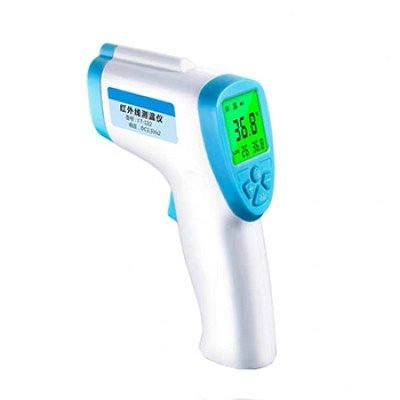- Call Us : +1 (510)-470-1367
- Low Prices
- Large Selection
- Satisfaction Guaranteed
- Secure Shopping

In the world of temperature measurement, non-contact thermometers have revolutionized the way we gauge heat. These innovative devices, also known as infrared thermometers (IR thermometers), offer the ability to measure temperatures from a distance. They operate based on the principle of detecting infrared radiation emitted by objects with a temperature above absolute zero (0 Kelvin), making them an essential tool in various fields.
To grasp the essence of non-contact thermometers, it's important to understand the science behind them. Every material emits infrared radiation when heated, and this emission is considered standard. The emissivity of a material refers to its surface's capability to emit radiation energy. By determining both the amount of infrared energy released by an object and its emissivity, we can accurately calculate its temperature. In essence, IR thermometers measure temperature by analyzing the amplitude of infrared energy emitted from the surface of an object.
Recent technological advancements have made non-contact thermometers more affordable and efficient, expanding their range of applications. When deciding on the right type of non-contact temperature measurement system, four key factors come into play: requirements, precision, reliability, and budget. There are three common types of infrared thermometers:
Spot Infrared Thermometers: These devices are suitable for quick, single-point temperature measurements and are commonly used in various industries.
Infrared Scanning Systems: More advanced and often more expensive, these systems are utilized in quality control during production processes to monitor temperature variations over larger areas.
Infrared Thermal Imagery: Similar to scanning systems but with the added benefit of creating thermal images, which are useful for identifying temperature anomalies in systems and equipment.
Buy digital infrared thermometer offer the advantage of simplicity and flexibility. They enable temperature measurements on moving objects, such as machinery in operation, without the need to interrupt processes. This eliminates the risk of contamination and minimizes any mechanical interference with the material surface. In applications where continuous temperature monitoring is critical, IR thermometers prove superior to traditional methods. However, it's important to note that non-contact thermometers exclusively measure surface temperatures.
Non-contact thermometers find their use in a wide range of applications. Whether you need to measure the core temperature of meat, monitor multiple points in a heated room, gauge the temperature of closed containers, or assess the surface temperature of a hot oven, non-contact thermometers offer a solution. They are particularly valuable in high-temperature scenarios, such as bedbug extermination, where temperatures can soar to 150°F-160°F. In stationary setups, these thermometers can record data and transmit it to a PC or smartphone through Bluetooth or wireless Internet connectivity for further analysis. Invest in the convenience and accuracy of digital infrared non-contact thermometers today and experience a smarter way to measure temperature.

